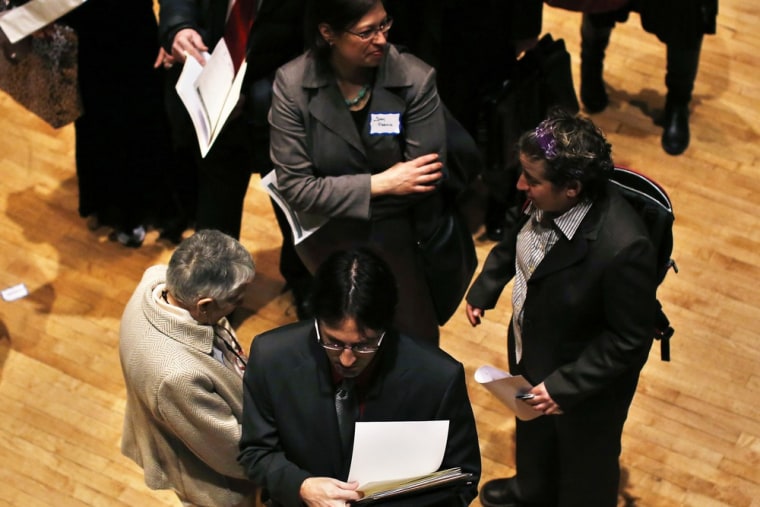
Jobs growth stumbled in March as U.S. employers paused to take stock amid Washington's financial belt-tightening and Europe's continuing financial crisis.
The Labor Department reported that the U.S. economy created 88,000 non-farm jobs in March, much lower than the 195,000 to 200,000 expected and well below February's 254,000 increase. March's job creation was the lowest in nine months.
Analysts polled by Reuters had expected a gain of 200,000.
The unemployment rate slipped slightly to 7.6 percent, the lowest in four years, from 7.7 percent in February.
The slower pace of growth in payrolls marks a steep reversal of the recent trend in which the labor market appeared to be stepping up its pace of recovery. It also comes after Washington increased taxes in January and just as across-the-board federal budget cuts began in March.
"When you get to numbers below 100,000, you have to start worrying," Paul Dales, an economist at Capital Economics in London, said before the data was released.
The slowdown in job growth could make policymakers at the Federal Reserve more confident about continuing a bond-buying stimulus program. Discussion at the central bank has been growing over whether to dial back the purchases, perhaps as soon as this summer.
Related:Have you been hurt by a career misstep or mistake?
Analysts have noted that the federal spending cuts have only just begun and will be a more substantial drag on the economy between April and June, when many government workers begin taking days off work without pay.
Government payrolls fell only 7,000 in March, reversing the 14,000-job gain from February.
Fed Chairman Ben Bernanke, who has said the labor market must show sustained improvement before monetary stimulus is eased, has voiced concern about the spending cuts.
The jobless rate fell as the labor force shrank by 496,000 people. The unemployment rate is derived from a survey of households which is separate from the survey of employer payrolls. The household survey actually showed employment fell by 206,000 in March.
The drop in the labor force sent the share of the population that is either employed or looking for work to 63.3 percent, its lowest since 1979.
The Associated Pressand Reuters contributed to this report.